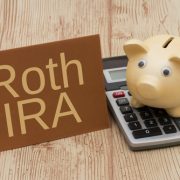Misconceptions about Self-Directed IRA Tax Lien Investing
When most people think about retirement investing, they usually think about some of the typical mainstream ideas. Owning stocks. Maybe making a smart investment in a private company. Owning real estate. But there is an alternative available to Self-Directed IRA investors that, depending on the individual investment, can be just as beneficial: Tax Lien Investing. In Tax Lien Investing, an investor takes on the tax lien of a property, and potentially assumes ownership over the underlying property, assuming certain conditions are met. This can be a beneficial way for retirement investors to put money into an alternative asset class they might not have previously considered.
But even knowing that, it’s important to clear up some popular misconceptions about Tax Lien Investing. Here are some misconceptions that you’ll want to be aware of:
Misconception #1: Tax Lien Investing is Only for the Very Rich
Tax Lien Investing might sound like a sophisticated financial instrument. And in some cases, it can be. But that fact alone doesn’t mean it’s solely for the super-rich. Yes, it’s important that you work with smart people around you, including accountants, to make sure you have your ducks in a row. But once you understand what goes into a tax lien and what the limits are, you probably will find it a relatively intuitive way to invest. When you purchase a tax lien, you are essentially purchasing another party’s debt. And this is relatively common no matter what your income levels may be.
Misconception #2: Tax Lien Investing is Too Complicated to Understand
Tax Lien Investing might not be as intuitive as buying a stock and hoping it goes up. There is certainly more to it than that. But that doesn’t mean that Tax Lien Investing as a whole will be outside of your skills as an investor. Every investor should do their own research, especially within a Self-Directed IRA. With a Self-Directed IRA, you’ll be calling the shots. And choosing whether to invest in tax liens—and then specifically which tax liens to invest in—will require you knowing and understanding the market in which you’re investing. By doing the research and recognizing that Tax Lien Investing is not as cut and dry as investing in stocks, you are laying the groundwork to set yourself up for success.
Misconception #3: Tax Lien Investing Isn’t Worth It
That depends. If you know what you’re getting to, and the limits of the returns you can get with Tax Lien Investing, you may find that there are plenty of opportunities that will work for your specific goals. If, however, you go into Tax Lien Investing without understanding what those limits are, you may have unrealistic expectations for what Tax Lien Investing can do for you. It’s better to do your homework first and understand what Tax Lien Investing consists of.
Misconception #4: It Doesn’t Matter What State You’re In
Anyone who’s been involved with real estate knows that the environment you’re in is paramount to the success you have. That’s no different in the world of Tax Lien Investing. In fact, because each state has its own rules for Tax Lien Investing, it’s an important consideration before you get started. You’ll want to know more about the limits set on tax lien payments in each state, because that can directly affect the kinds of returns you ultimately see.
In Tax Lien Investing, it’s not always easy to tell what’s myth and what’s reality. But it is important that you understand where you want your investments to go in the future. That’s why you should do your homework and work with a Self-Directed IRA administration firm you trust.
Interested in learning more about Self-Directed IRAs? Contact American IRA, LLC at 866-7500-IRA (472) for a free consultation. Download our free guides or visit us online at www.AmericanIRA.com.
Want to take a look at some more misconceptions with Self-Directed accounts? Visit: Three Misconceptions About Building Wealth Through a Real Estate IRA (americanira.com)










